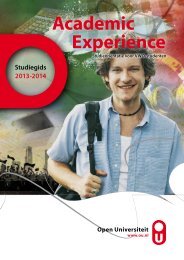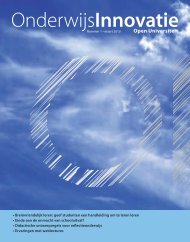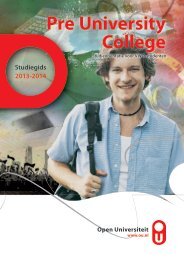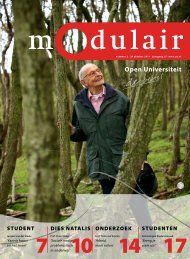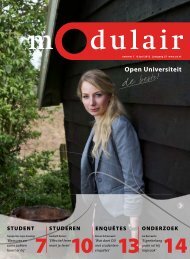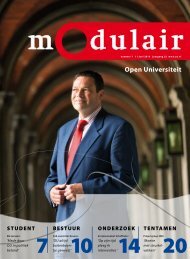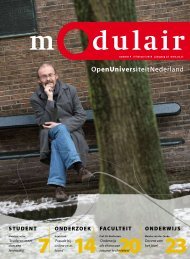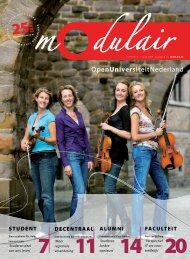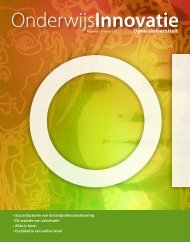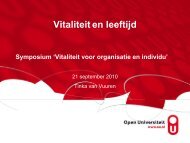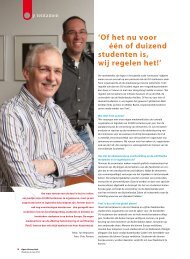TEACHING OLD DOGS NEW TRICKS: A PARADIGM OF LIFELONG ...
TEACHING OLD DOGS NEW TRICKS: A PARADIGM OF LIFELONG ...
TEACHING OLD DOGS NEW TRICKS: A PARADIGM OF LIFELONG ...
Create successful ePaper yourself
Turn your PDF publications into a flip-book with our unique Google optimized e-Paper software.
learner’s ability to boost expected learning outcome through adequate and personal<br />
belief in one’s capabilities and self-worth.<br />
Prefatory<br />
The spiral demand by the general public for placement in Higher Institutions of Learning<br />
(HIL) is a criterion with which to measure the incapability of many conventional<br />
institutions to effectively cope with the absorptive capacity of the teeming African<br />
population. This therefore, calls for a more viable and economic route to widen access<br />
of majority of people to higher education. The most plausible solution to this problem is<br />
the deliberate adoption of Open Distance Learning (ODL) because of its attractive<br />
virtues which according to Braimoh (1998) include the following:<br />
• It mitigates the perennial problem of restricted admission process<br />
• It encourages learning and earning to go pari-passu. This is because it is<br />
no longer rewarding for the employers of labour to grant study leave with<br />
pay to their employees as a result of the global economic recession.<br />
Consequently too, it is also no longer attractive to the employees to resign<br />
their jobs for the luxury of full time study in the face of deepening global<br />
unemployment situation.<br />
• It stimulates intellectual activity and skills development as a result of<br />
independent thinking arising from learners’ exposure to variety of learning<br />
materials both in print and electronic formats.<br />
• It is more cost effective when compared with the conventional higher<br />
education, particularly when it is considered from the premise of the<br />
enormity of expenditure that goes into the running conventional tertiary<br />
institutions to achieve the same goal of person-power development through<br />
the ODL route.<br />
• It has the element of immediacy, especially in the application of the skills<br />
and knowledge gained while studying for the purpose of improving the<br />
learner’s job performance at his/her work post.<br />
• It encourages massification of products as a result of the heterogeneity of<br />
clientele, subject coverage and geographical dispersion of learners’<br />
location.<br />
• It is not disruptive in any form, as distance learning does not require the<br />
learner to be completely removed from his/her community, workplace or<br />
family members.<br />
It must however be noted, that majority of single, bi-modal or mixed modal Distance<br />
Higher Education Institutions (DHEIs) in most African countries are staffed with<br />
academics drawn predominantly from the F2F traditional Institutions. Consequently,<br />
because of their initial academic training, practical orientation and work experience,<br />
which are at variance with ODL Institutions, adaptability to ODL practice therefore<br />
becomes a ”war” with concomitant effect on academic quality, weak reflexive research<br />
output and a frustrating throughput rate.<br />
This paper therefore, proposes the adoption of a strategic approach, to the<br />
improvement of academic quality of staff of African ODL institutions, especially, through



